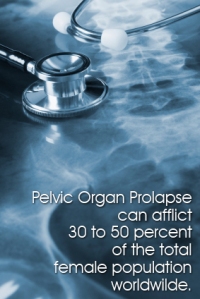The issue on surgical mesh risks dates back as early as 2008 when the FDA issued a warning following a considerable number of reports regarding injuries associated with the use of surgical mesh products. These surgical mesh products are used to treat pelvic organ prolapse POP, “a condition that results when the normal supporting structures of the vagina deteriorate.”The loss of support in the structure of the vagina can cause any or all of the following structures to prolapse or drop out from its position: urethra, bladder, bowel, cervix,vaginal vault and uterus. It is also used to treat stress urinary incontinence (SUI), an involuntary leakage of urine during moments of physical activity, such as coughing, sneezing, laughing or exercise.
The FDA stated that it had received more than 1,000 complaints about surgical mesh products in three years ending 2007.The FDA updated the warning and stated that between January 1, 2008 and December 31, 2010 it had received 2,872 additional reports of complications related to surgical mesh products. This led to the issuance of a warning to healthcare providers and patients notifying them that the serious complications related to the use of vaginal mesh products for transvaginal treatment of pelvic organ prolapse reaches new heights. The increasing number of reports also prompted the FDA to look closely into the risks reported and to determine the truth of the matter.
The issue that needs to be resolved by the FDA is that, whether or not surgical mesh products used to treat pelvic organ prolapse, POP and stress urinary incontinence,SUI can do more harm than good. In other words, Does the benefit of such use outweigh the risks it involves?
The US Food and Drug Administration, FDA said in a communication dated July 13, 2011.
“It is not clear that transvaginal POP repair with mesh is more effective than traditional non-mesh repair in all patients with POP and it may expose patients to greater risk.”
 Thus, on September 8 and 9, 2011, the Obstetrics-Gynecology Devices Panel of the Medical Device Advisory Committee convened and discussed about the safety and effectiveness of transvaginal surgical mesh used for the treatment of pelvic organ prolapse. The panel discussed among others the risks and benefits of these devices in view of the many reported adverse effects such as vaginal erosion causing pelvic pain and dyspareunia or pain during sexual intercourse. The committee also looked into the data providing information on the clinical health benefits of surgical mesh. The committee was also asked to present input on the pre-market and post-market performance of the product during the deliberation.
Thus, on September 8 and 9, 2011, the Obstetrics-Gynecology Devices Panel of the Medical Device Advisory Committee convened and discussed about the safety and effectiveness of transvaginal surgical mesh used for the treatment of pelvic organ prolapse. The panel discussed among others the risks and benefits of these devices in view of the many reported adverse effects such as vaginal erosion causing pelvic pain and dyspareunia or pain during sexual intercourse. The committee also looked into the data providing information on the clinical health benefits of surgical mesh. The committee was also asked to present input on the pre-market and post-market performance of the product during the deliberation.
In its recent update issued January 4, 2012 the FDA said that the use of transvaginal mesh used to treat Pelvic organ Prolapse, POP or Stress Urinary Incontinence, SUI shall be reclassified from Class II to Class III (General Controls and Pre-market Approvals) which means that the device has been reclassified as high-risk and requires pre-market approval application. The FDA also stressed that it will continue to assess the safety and effectiveness of surgical mesh devices through further studies. The FDA pursuant to these findings issued an order on January 3, 2012 requiring makers of implantable surgical mesh device used to treat Stress Urinary Incontinence in women to conduct an in depth study on the possible risks involved. It is a result of a recommendation made in September 2011 by an FDA Advisory panel finding these manufacturers of surgical mesh products requiring the need for further studies.
References:
fda.gov/MedicalDevices/Safety/AlertsandNotices/ucm142636.htm
webmd.com/urinary-incontinence-oab/news/20110713/fda-surgical-mesh-for-pelvic-prolapse-risky-unnecessary
fda.gov/MedicalDevices/ProductsandMedicalProcedures/ImplantsandProsthetics/UroGynSurgicalMesh/default.htm
nytimes.com/2012/01/05/health/research/fda-orders-more-study-on-surgical-mesh-risks.html23
fda.gov/MedicalDevices/DeviceRegulationandGuidance/Overview/ClassifyYourDevice/default.htm
